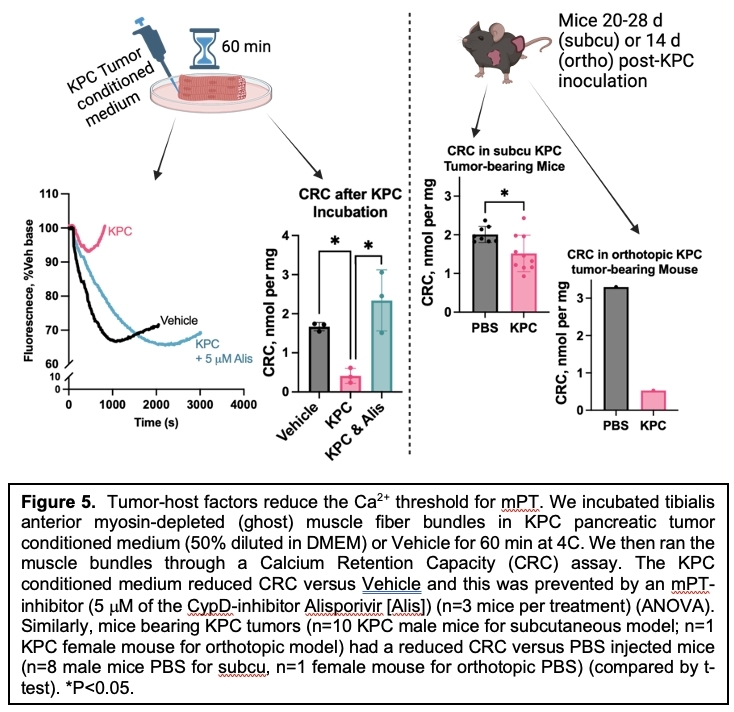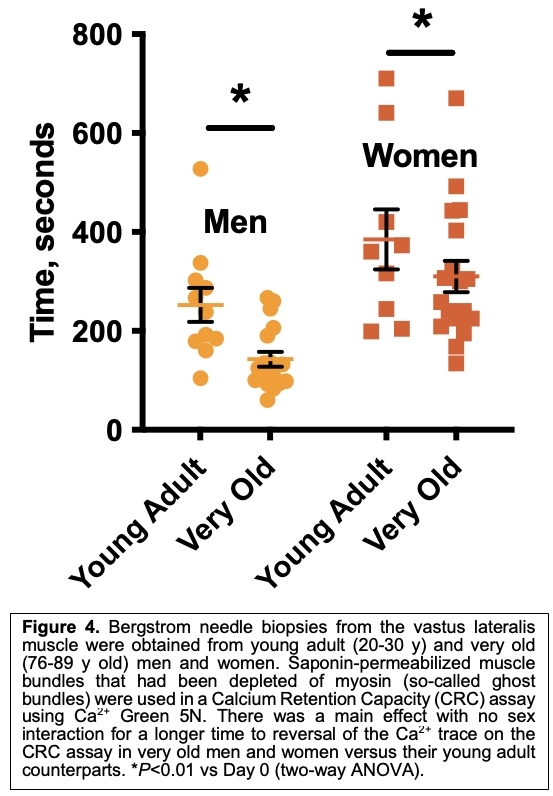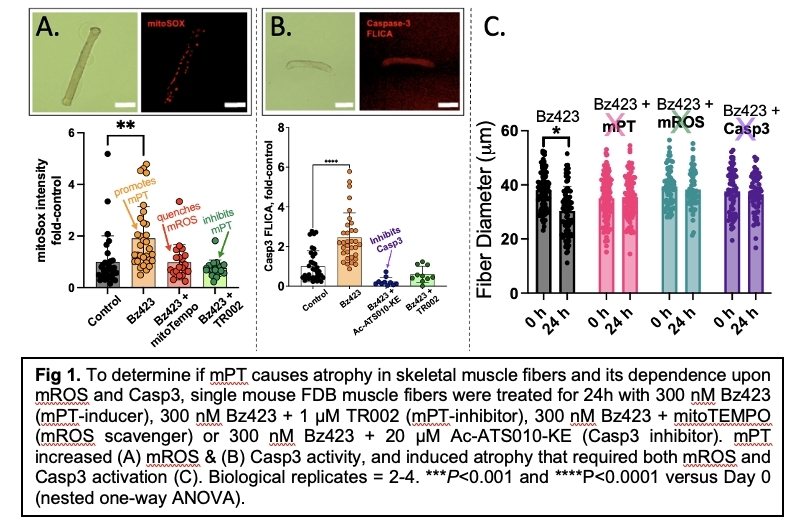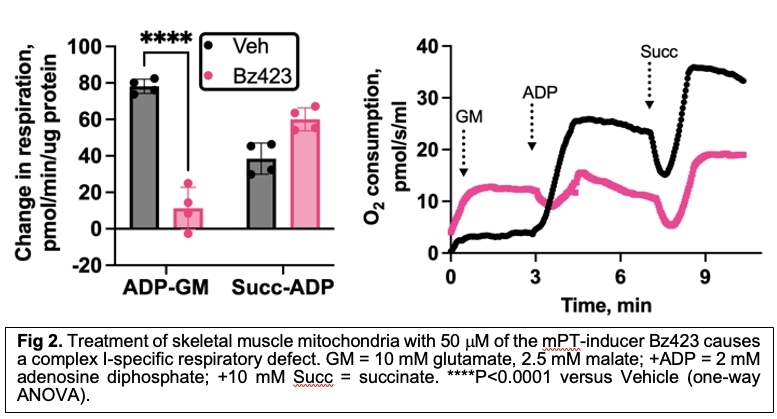Statement of the Problem: In contrast to the established role of mitochondrial permeability transition (mPT) in cardiac ischemia-reperfusion injury, neurodegeneration, and other tissue pathology, the role of mPT in skeletal muscle is less clear, notwithstanding some work in muscular dystrophies.
Methods: To address this gap, we used approaches in adult mouse single muscle fibers and isolated skeletal muscle mitochondria to establish the consequences of mPT in skeletal muscle. We induced mPT using Bz423, an agent that binds to the same site as cyclophilin D (CypD) on the oligomycin sensitivity conferring protein of the ATP synthase. We used inhibitors of mPT that worked through CypD (Alisporivir) or were CypD-independent (TR002, Isox63). We assessed mitochondrial ROS (mROS) generation using mitoSox, and inhibited mROS using mitoTEMPO. We assessed caspase 3 (Casp3) activation using a Casp3 FLICA assay, and inhibited Casp3 using a novel inhibitor (Ac-ATS0101-KE). We assessed mitochondrial respiration in isolated mouse skeletal muscle mitochondria. We evaluated the integrity of the acetylcholine receptor cluster (AChR) on single mouse muscle fibers by labeling with Alexa 488-conjugated a-bungarotoxin (aBG). To provide context to mPT in skeletal muscle, we performed a calcium retention capacity (CRC) in muscle bundles from elderly men and women, in mouse muscle fiber bundles incubated in pancreatic tumor-conditioned media, and in mice inoculated with pancreatic tumor cells. All animal and human experimentation were done in compliance with institutional regulations, including IACUC approval (protocol 202011171 at UF), IRB approval (BMC-06-015, A08-M66-12B), and written informed consent.
Results: Inducing mPT in single mouse muscle fibers using 300 nM Bz423 increased mROS and this was prevented by either an mPT inhibitor (1 mM TR002) or 5 mM mitoTEMPO. Similarly, Bz423 increased Casp3 activity and this was prevented by co-treating with TR002 or Ac-ATS010-KE. Incubating single mouse muscle fibers with 300 nM Bz423 for 24 h reduced muscle fiber diameter by ~20% and this was prevented by inhibiting mPT (TR002), inhibiting mROS, or inhibiting Casp3 (Fig 1). Treatment of isolated mouse skeletal muscle mitochondria with 25-50 mM Bz423 caused a complex I-specific respiratory impairment (Fig 2). Bz423 treatment of single mouse muscle fibers also reduced AChR content and fragmented the AChR cluster at the muscle endplate and this was prevented by inhibiting mPT or Casp3 (Fig 3). We found that the time to mPT in the CRC assay was reduced in muscle bundles from the vastus lateralis of elderly men and women (Fig 4). CRC was also reduced following an acute 60 min incubation of mouse muscle bundles in pancreatic tumor-conditioned media and in mice inoculated with pancreatic tumor cells (Fig 5).
Conclusions: Collectively, our results show that inducing mPT in skeletal muscle causes muscle atrophy, AChR cluster dismantling, and a complex I-specific respiratory impairment, which are common muscle phenotypes seen with aging and a variety of disease conditions. Consistent with mPT being relevant to muscle pathology with aging and disease, we also show that mitochondria are sensitized to mPT in aging and in response to tumor-host factors in cancer cachexia.





